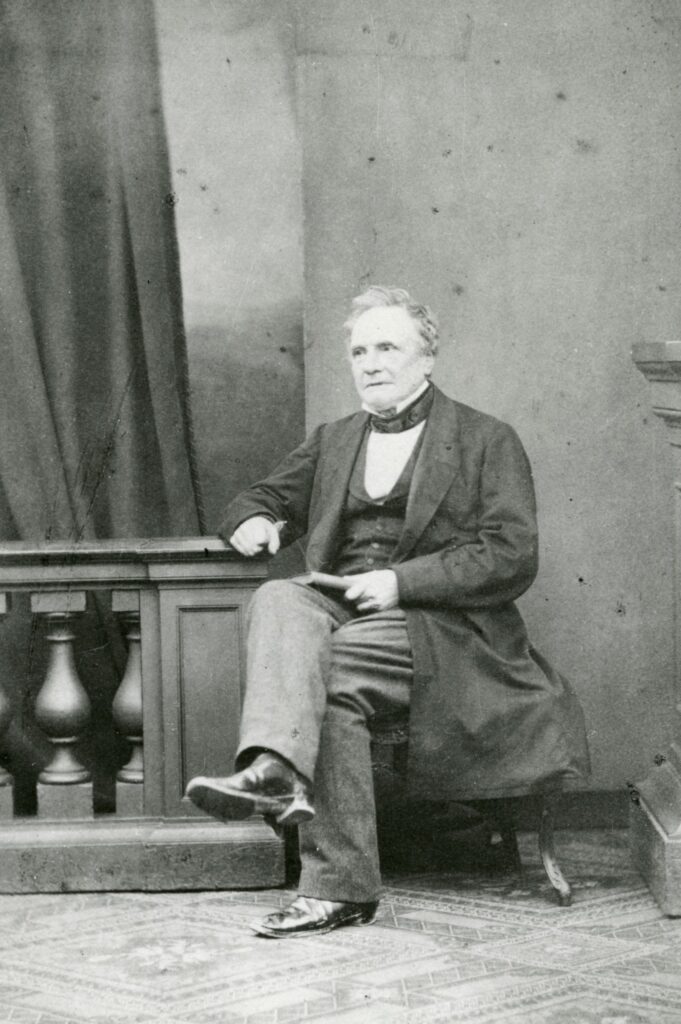Charles Babbage (1791-1871) was an English mathematician and inventor who is best known for his work on the design of mechanical computers. His ideas and designs laid the groundwork for modern computing and had a profound impact on the development of technology in the 19th and 20th centuries.
Early Life and Education
Charles Babbage was born on December 26, 1791, in London, England, to Benjamin Babbage. a banker and a merchant, and his wife Betsy Plumleigh Teape. Babbage was the second of four children and showed an early aptitude for mathematics. At the age of eight, he was sent to a private school in Kensington, where he received a classical education.
In 1808, Babbage entered Trinity College, Cambridge. where he studied mathematics and received his Bachelor of Arts degree in 1811. He remained at Cambridge to pursue his studies and was elected a Fellow of the Royal Society in 1816.
Early Inventions
Babbage’s interest in technology and mechanical devices led him to invent several machines while he was still a student at Cambridge. One of his earliest inventions was a device for calculating mathematical tables. which he called the “Difference Engine.” The machine was designed to calculate polynomial functions by using the method of finite differences, which involves subtracting the value of a function at one point from its value at another point. Babbage saw that this method could be automated, and he set about designing a machine that could perform the necessary calculations automatically.
Babbage worked on the design of the Difference Engine for several years, but he was unable to secure funding to build a working model. He continued to refine his designs. however, and in 1822, he presented a paper on the subject to the Royal Society.
The Analytical Engine
While working on the Difference Engine, Babbage came up with the idea for a more advanced machine that he called the “Analytical Engine.” The Analytical Engine was designed to perform not only mathematical calculations but also logical operations, making it the first general-purpose computing machine.
The Analytical Engine was to be powered by steam and would use punch cards to input data and program instructions. The punch cards were similar to those used in Jacquard looms, which were used to weave complex patterns into textiles. The cards could be programmed to perform a wide range of calculations and operations, and they could be reprogrammed for different tasks.
Babbage worked on the design of the Analytical Engine for several years, but he was unable to secure funding to build a working model. He continued to refine his designs, however, and in 1833, he presented a paper on the subject to the Royal Society.
Ada Lovelace
Babbage’s work on the Analytical Engine brought him into contact with Ada Lovelace, a young mathematician and writer who is now recognized as the world’s first computer programmer. Lovelace was the daughter of the poet Lord Byron and had been introduced to Babbage by a mutual friend.
Lovelace was fascinated by Babbage’s ideas and began working closely with him on the design of the Analytical Engine. She helped to refine the machine’s design and also wrote a series of notes on the subject that are now recognized as the first computer program.
Lovelace’s notes on the Analytical Engine are particularly significant because they show that she understood the potential of the machine to do more than just mathematical calculations. She realized that the machine could be programmed to perform a wide range of tasks and that it could be used to create music, graphics, and even to control machines.
Later Life
Despite his numerous contributions to science and technology, Babbage was never able to complete a working model of either the Difference Engine or the Analytical Engine. He continued to work on the designs, however, and in the 1840s, he was able to secure funding from the British government to build a small-scale model of the Difference Engine. The completed model was demonstrated to the Royal Society in 1849, and Babbage was awarded a gold medal for his work.
Babbage continued to work on the Analytical Engine, but he was never able to complete a working model of the machine. He was also unable to secure funding from the British government to continue his work, and he eventually abandoned the project.
In the later years of his life, Babbage turned his attention to other interests, including economics and astronomy. He was an advocate for social and political reform, and he was a member of several organizations that promoted these causes.
Charles Babbage died on October 18, 1871, at the age of 79. Although he was never able to build a working model of his mechanical computers, his ideas and designs laid the groundwork for modern computing and had a profound impact on the development of technology in the 19th and 20th centuries.
Legacy
Charles Babbage’s legacy is profound, as his ideas laid the groundwork for the development of modern computing. The concepts and principles that he developed more than 150 years ago are still relevant today and have been refined and expanded upon by generations of scientists and engineers.
Which is the best institute for an SAS course
Babbage’s work on the Difference Engine and the Analytical Engine was the precursor to modern digital computing, and his ideas helped to pave the way for the development of modern computers. His work also helped to establish the principles of software and hardware engineering, which are still central to computer science today.
Babbage’s collaboration with Ada Lovelace was also significant, as it brought together two great minds and helped to advance the field of computing. Lovelace’s insights into the potential of the Analytical Engine helped to expand the scope of Babbage’s work and laid the foundation for modern programming.
Today, Charles Babbage is remembered as a pioneer in the field of computing and as one of the most important inventors of the 19th century. His ideas and designs helped to shape the course of modern technology, and his legacy continues to inspire new generations of scientists and engineers.
Babbage’s legacy is also celebrated in various ways, including through academic and professional societies. The Babbage Institute for the History of Information Technology at the University of Minnesota is one such organization, dedicated to preserving the history of computing and its impact on society.
In addition, Babbage’s designs for the Difference Engine and the Analytical Engine have been reconstructed and built, using modern manufacturing techniques and materials. These reconstructions have demonstrated the potential of Babbage’s designs and have shown how his mechanical computers could have been used to solve complex mathematical problems.
Babbage’s work has also been celebrated in popular culture, with references to him and his machines appearing in books, movies, and television shows. The Steampunk genre, for example, often features mechanical computers and other Victorian-era technology, inspired in part by Babbage’s designs.
Overall, Charles Babbage’s contributions to the field of computing have had a lasting impact on society, and his legacy continues to inspire new generations of innovators and inventors.
Conclusion
Charles Babbage was a visionary inventor who revolutionized the field of computing with his designs for the Difference Engine and the Analytical Engine. His ideas laid the groundwork for modern computing and helped to establish the principles of software and hardware engineering that are still central to computer science today.
Although Babbage was never able to build a working model of his mechanical computers, his designs and ideas were ahead of their time and have had a profound impact on the development of technology in the 19th and 20th centuries.
Today, Charles Babbage is remembered as a pioneer in the field of computing, and his legacy continues to inspire new generations of scientists and engineers. His contributions to the field of computing will be remembered for many years to come, and his ideas will continue to shape the course of modern technology.

